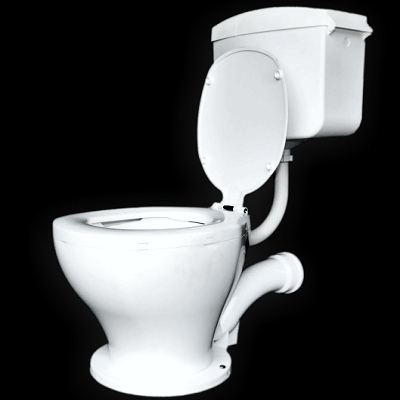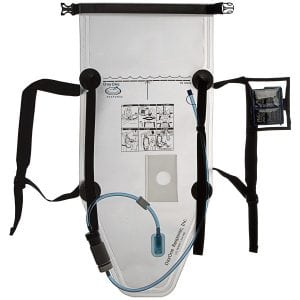
Agriculture
August 14, 2024
Envirosan EazyWash 2L Handwashing Unit
Read SolutionImplemented by
Envirosan

Updated on January 4, 2024
·Created on June 19, 2016
The Envirosan Eazi Flush converts VIP latrines and urine diversion toilets into a flush system.
Eazi Flush is a toilet used to convert Ventilated Improved Pit (VIP) and urine diversion toilets to a flush system. The toilet can be connected to an existing piped sewer network or operate as a pour flush or low flush toilet in areas with no piped water available. When used as a pour flush toilet the Eazi flush requires 2 liters per flush.
Target SDGs
SDG 6: Clean Water and Sanitation
Market Suggested Retail Price
$650.00
Target Users (Target Impact Group)
Household, Community
Distributors / Implementing Organizations
Envirosan sells the toilets and Cemforce uses the Eazi Flush toilet in their installations of pour flush toilets.
Competitive Landscape
Direct competitors include Elephant Toilet.
Countries
South Africa
Manufacturing/Building Method
Envirosan products are manufactured in South Africa using injection molding plastics. The toilet was developed in cooperation with the WRC (Water Research Commission) in South Africa.
Intellectural Property Type
Trademark
User Provision Model
Users can obtain the Eazi Flush directly from Envirosan or through the Cemforce pour flush toilet system.
Distributions to Date Status
As of 2016, pilot programs and government implementations estimate that over 700 toilets have been distributed.
Toilet type
Toilet
Evacuation method
Flush or pour flush
Storage conditions
Pit
Capacity (L)
Unknown
Time until emptying
Unknown
Design Specifications
The Eaziflush is constructed out of molded plastics. When used as a pour flush toilet, each flush requires 1.5-2 liters of water (which can be greywater or rainwater). The Eaziflush has an incorporated child seat lid. The product can be connected to any backend but according to manufacturer it fills a pit a third of the speed of a corresponding VIP latrine.
The Eaziflush can be connected to a sewer system or used as a pour flush toilet, it can be connected to any backend. The toilet is constructed directly over a perforated lined pit.
Technical Support
Envirosan provides a maintenance and support service for all of the equipment supplied.
Replacement Components
All components are produced by Envirosan and available from them.
Lifecycle
Unknown
Manufacturer Specified Performance Parameters
When the Envirosan is connected to a pit, the pit lasts twice as long as a VIP pit. The Eaziflush only requires 2 L of water per flush. The manufacturer designed the toilet to:
- look and operate similar to a flush toilet
- eliminate odor due to the water seal
- be safe for children
- have a low risk of blocking when using toilet paper or newspaper
- have multiple back-end options
- demand minimal user intervention
- save water
Vetted Performance Status
The Eaziflush only needs 1-2 L of water per flush depending on the type of excreta and paper used.
Safety
Compared to VIP toilets, user safety is increased due to water seal in U-trap between user and waste pit. The water seal prevents flies from entering the facility and keeps waste away from the user. Children are also protected from the hazards of falling into waste pits and exposure to decommissioned, full waste pits. Community members are calling it "the safe toilet".
Complementary Technical Systems
A child toilet seat is incorporated into the design which features a lid, child seat, and adult seat. The toilet has to be connected to a sewer system or a storage of some sort.
Academic Research and References
None
Compliance with regulations
The product is Agrement and NHBRC certified and approved for use by the Department of Human Settlement’s in South Africa.interview with manufacturer
Evaluation methods
The manufacturer cites evaluation criteria as liters per flush, safety, odor and risk of blocking as parameters for evaluation.

Agriculture
August 14, 2024
Implemented by
Envirosan

Agriculture
December 20, 2023
Implemented by
Dry Flush

Agriculture
January 6, 2024
Implemented by
Sulabh International

Agriculture
January 6, 2024
Implemented by
Sustainable Sanitation and Water Management (SSWM)

Agriculture
December 27, 2023
Implemented by
Aquabox, UK

Agriculture
January 11, 2024
Implemented by
Kenya Ceramic Project (KCP)

Agriculture
January 19, 2024
Implemented by
Clean Team Ghana

Agriculture
January 8, 2024
Implemented by
DayOne Response

Agriculture
December 20, 2023
Implemented by
SOIL Haiti

Agriculture
June 22, 2024
Implemented by
Hippo Roller
Have thoughts on how we can improve?
Give Us Feedback